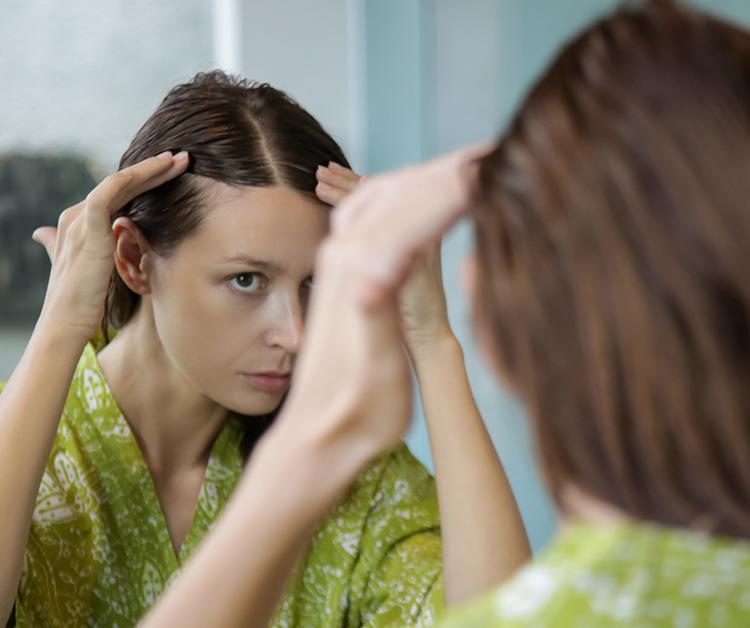Due to maintenance, rewards points for receipt uploads will be delayed. Thank you for your patience!

For many women, pregnancy comes with a particularly attractive perk: thicker, fuller, shinier hair. But a few months after giving birth, you may suddenly find clumps of hair coming out as you shampoo, or perhaps your ponytail suddenly feels a little thin. No, you're not imagining things in your sleep-deprived state—your brush really does have more loose strands than usual.
With that said, there's no reason to stress. Postpartum hair loss is not only common, it's normal and temporary. To understand why this is happening, consider this your crash course on the cycle of hair growth.
Prior to pregnancy, around 90% of your hair is in the anagen, or growth phase.1 The anagen phase lasts for up to 7 years before it makes a transition into the telogen, or rest phase. Then, after a few months, hair in the telogen phase naturally falls out. (Fun fact: most people lose up to 100 hairs each day.) Finally, the growth cycle begins anew.
But pregnancy hormones change this pattern dramatically.2 During pregnancy, increased levels of estrogen cause your hair to linger in the anagen phase. Instead of progressing to the telogen phase, your hair stays in growth mode. Hence the full, lustrous head of hair that pregnant women get to enjoy.
After having your baby, those pregnancy hormones return to normal levels—and in turn, your hair growth returns to its regular cycle.3 When all of that hair suddenly shifts from the anagen phase to the telogen phase, you'll notice a lot more shedding. This may seem like an unusually high amount of hair loss, but it may help to remember that this is the amount of hair you would have shed over time. It's just happening in a more concentrated segment of time, so it's easier to notice hair loss after pregnancy.
You may be wondering, "How long does postpartum hair loss last?" After your hair sheds, the issue will resolve itself as your hair begins to grow again. By the time your little one is between 6 and 12 months old, you'll likely see significant regrowth. In the meantime, however, there are a few things you can do to encourage your hair to grow back strong:
Finally, be on the lookout for stray hairs when you're around your baby. Rarely, a hair can become wrapped around a baby's finger or toe. Known as a "hair tourniquet," this can cut off circulation.4,5 If this occurs, unwind the hair from the loose end to remove it. Though this is unlikely to happen, it's better to be prepared—which is a philosophy that will serve you throughout all of parenthood.
Remember, postpartum hair loss can be frustrating—but it's just a natural, normal postnatal process. A little patience and regular self-care can help you pass the time as your hair returns to its usual growth schedule. By the time your baby is toddling around, your hair will be "on the move" as well!
If you're looking for tips on eating well (and giving your hair what it needs to grow strong), don't miss these nutrition plans for new moms.
1 Types of Hair Loss
2 Effect of Pregnancy On the Human Hair Cycle
3 The Changes in the Hair Cycle During Gestation and the Post-Partum Period
4 Rethinking Biotin Therapy for Hair, Nail, and Skin Disorders
5 Toe Tourniquet Syndrome in Association With Maternal Hair Loss
All information on Enfamil, including but not limited to information about health, medical conditions, and nutrition, is intended for your general knowledge and is not a substitute for a healthcare professional's medical identification, advice, or management for specific medical conditions. You should seek medical care and consult your doctor or pediatrician for any specific health or nutrition issues. Never disregard professional medical advice or delay seeking medical treatment, care, or help because of information you have read on Enfamil.